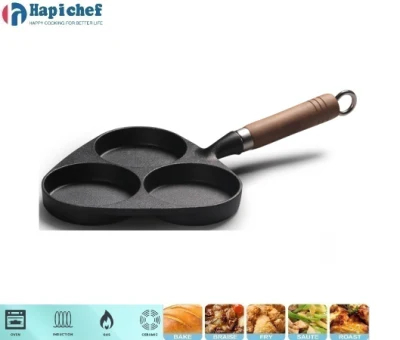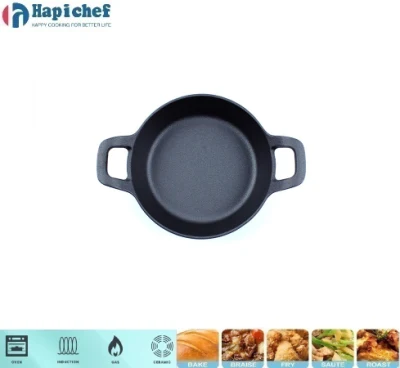frying pan
Selecting the Perfect Frying Pan A Comprehensive Guide

A frying pan is an indispensable tool in any kitchen, yet many underestimate its significance, often leading to culinary misadventures. Understanding the nuances of frying pans not only enhances your cooking experiences but also guarantees that each meal is made with precision and care. This piece demystifies frying pans, shedding light on what makes the ideal pan an essential kitchen asset.
Material Matters The Foundation of a Great Frying Pan The material of a frying pan plays a crucial role in its performance. Each material has its unique benefits 1. Stainless Steel Known for its durability and non-reactive nature, stainless steel frying pans are ideal for browning and deglazing. They do not alter the food’s flavor and can withstand high heat, making them versatile for various cooking methods. 2. Cast Iron Prized for its excellent heat retention, a cast-iron frying pan is a staple for traditionalists. It requires maintenance to keep it seasoned and prevent rust, but it is indestructible and improves with age, imparting a distinct depth of flavor to dishes. 3. Non-stick These pans are perfect for cooking delicate foods like eggs and fish. They require minimal oil, promoting healthier eating. However, it’s crucial to avoid high heat to maintain the integrity of the non-stick coating.

Size and Weight Finding Balance in Your Frying Pan Choosing the right size of frying pan is crucial. A larger pan allows for cooking in bulk but requires more storage space and might be heavier. Weight is equally important; heavier pans ensure even cooking but might be cumbersome to handle. Consider your cooking habits and physical comfort to find a pan that offers a harmonious balance.
Handle with Care The Ergonomics and Safety of Frying Pan Handles The handle is a vital component often overlooked. A well-designed handle with an ergonomic grip ensures safe and comfortable maneuvering of the pan. Heat-resistant handles are essential to prevent burns and accidents. Furthermore, a handle with a hole allows for easy storage options like hanging.
frying pan
Cooking Techniques Leveraging the Features of Your Frying Pan A frying pan is versatile and can be used for a plethora of cooking techniques - Searing Stainless steel and cast iron pans are excellent for high-heat searing, creating a flavorful crust on meats. - Sautéing Non-stick pans are ideal for quick sautéing without the worry of food sticking or burning. - Oven-proof Cooking Some frying pans, especially cast iron, are oven-proof, allowing you to start a dish on the stove and finish it in the oven seamlessly.
Caring for Your Frying Pan Longevity and Maintenance Proper care extends the lifespan of your frying pan - Clean non-stick pans with a soft sponge to avoid scratching. - Regularly season cast iron pans to maintain their non-stick properties and protect against rust. - Avoid using harsh detergents on any frying pan as they can degrade the surface and affect performance.
Investing in Quality The Economic and Culinary Return An investment in a high-quality frying pan pays dividends in longevity, efficiency, and cooking satisfaction. A quality pan often carries a higher upfront cost but reduces the need for replacements and enhances every dish you prepare, proving cost-effective in the long run.
In summary, understanding the intricacies of frying pans ensures you select one that meets your culinary needs. Material, size, weight, handle design, and maintenance are crucial considerations that impact your cooking outcomes and safety. When chosen wisely, a frying pan becomes more than a utensil—it evolves into an instrument of culinary mastery.
-
Why Ecast Iron Grills Are Heating Up Outdoor CookingNewsMay.23,2025
-
Why Cast Iron Cookware Belongs in Every Kitchen?NewsMay.23,2025
-
Why Cast Iron Bakeware Is a Timeless Kitchen EssentialNewsMay.23,2025
-
Upgrade Your Kitchen with Cast Iron Bakeware SetsNewsMay.23,2025
-
Master Outdoor Cooking with the Camping Dutch OvenNewsMay.23,2025
-
Casserole Cast Iron Cookware for Rich, Slow-Cooked FlavorNewsMay.23,2025
-
The Ultimate Guide to Cast Iron Deep Dish Pizza PerfectionNewsMay.21,2025
